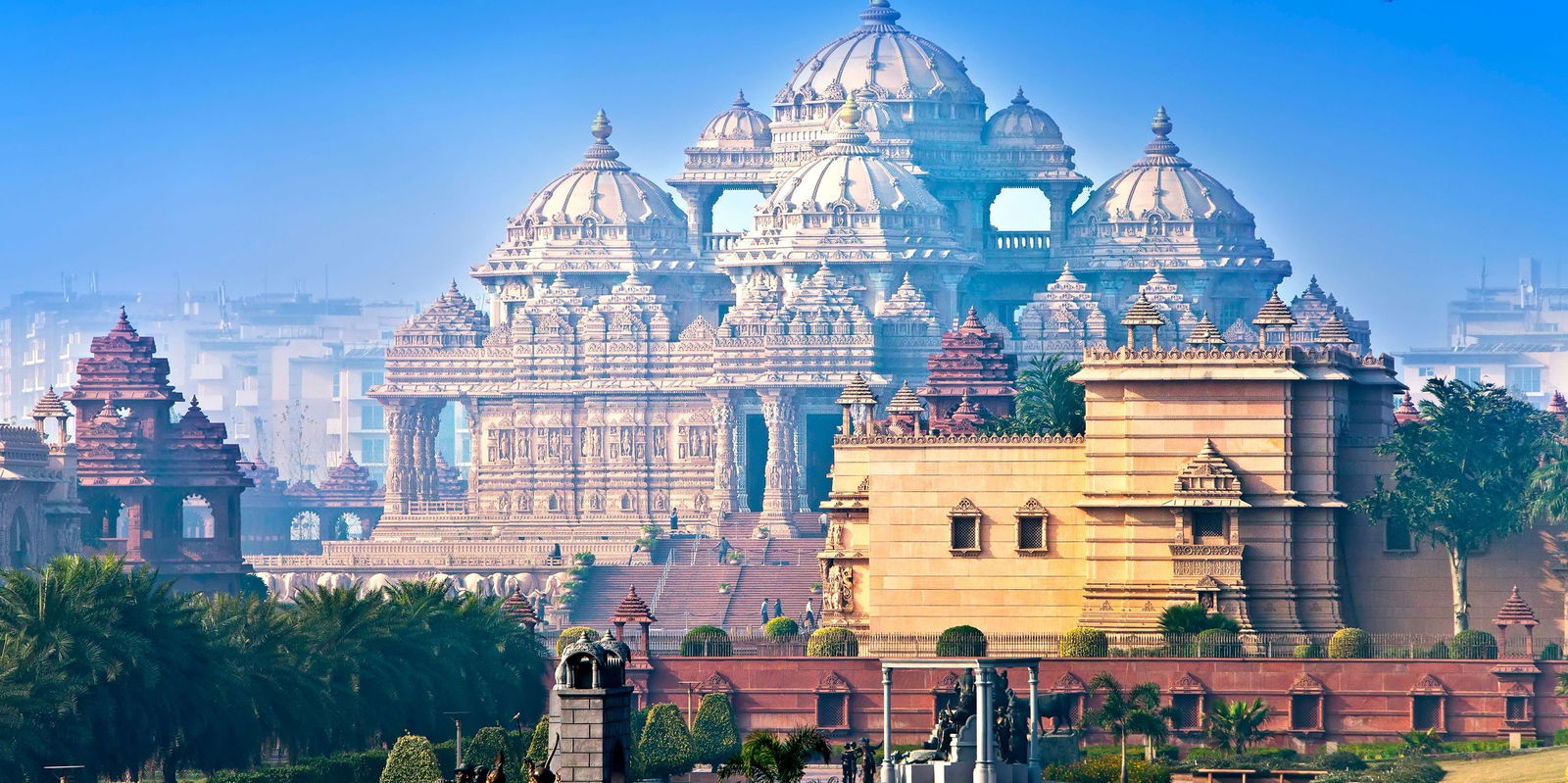


Delhi, the capital of India, is a vibrant, chaotic, and captivating city that weaves together ancient history and modern life. With towering forts, bustling bazaars, grand temples, and a booming food scene, Delhi offers a dynamic introduction to India’s cultural and historical richness.
Delhi is a city of contrasts—where medieval forts rise beside metro lines, and age-old traditions meet global trends. Whether you’re tracing India’s royal past or discovering its modern pulse, Delhi is a fascinating and unforgettable first (or final) stop in India.
This UNESCO World Heritage Site is a striking symbol of Mughal power and architecture. Explore its massive red sandstone walls, royal chambers, and lush gardens, and learn about its role in India’s independence history.
Often seen as a precursor to the Taj Mahal, Humayun’s Tomb is a masterpiece of Persian-influenced Mughal architecture set in beautiful symmetrical gardens—perfect for a peaceful stroll and history fix.
This iconic war memorial sits at the heart of New Delhi and is surrounded by ceremonial boulevards and government buildings. It’s especially beautiful when lit up at night, and the surrounding lawns are great for an evening walk.
Dive into the sensory overload of Old Delhi, where you can explore bustling bazaars, ride a rickshaw through narrow alleys, and sample legendary street food like parathas, jalebis, and spicy chaat.
Standing at 73 meters, Qutub Minar is the tallest brick minaret in the world and another UNESCO-listed gem. The complex also houses ancient ruins and the mysterious Iron Pillar that hasn’t rusted in over a millennium.

Winter is one of the most pleasant times to visit Delhi, with temperatures ranging from 45°F to 70°F (7°C to 21°C). Mornings can be foggy and crisp, while afternoons are typically sunny and comfortable—perfect for sightseeing at landmarks like the Red Fort, Humayun’s Tomb, and Qutub Minar. Street markets like Dilli Haat and Chandni Chowk are lively and colorful, and the city's food scene thrives with hot parathas, chaat, and street-side chai stalls.

Spring in Delhi is warm and dry, with temperatures rising from 65°F to 90°F (18°C to 32°C). It’s a short but delightful season before the intense heat sets in. Parks and gardens bloom with flowers, and outdoor festivals like Holi fill the city with color and celebration. It’s a great time to explore Delhi’s architectural marvels, heritage walks, and rooftop cafés before summer arrives.

Summer in Delhi is scorching and dry, with temperatures frequently exceeding 105°F (40°C). It’s the hottest season and often the least favorable for travel unless you're comfortable with extreme heat. Locals seek refuge indoors or venture out early in the morning or after sunset. Despite the heat, it’s mango season, and local markets overflow with delicious varieties.

The monsoon arrives in July, bringing much-needed relief from the summer heat and temperatures between 77°F and 95°F (25°C to 35°C). Rain showers—sometimes heavy—are common, particularly in the afternoons. The city turns green and refreshed, though traffic can be slower due to waterlogging. Still, the atmosphere becomes romantic and vibrant.
